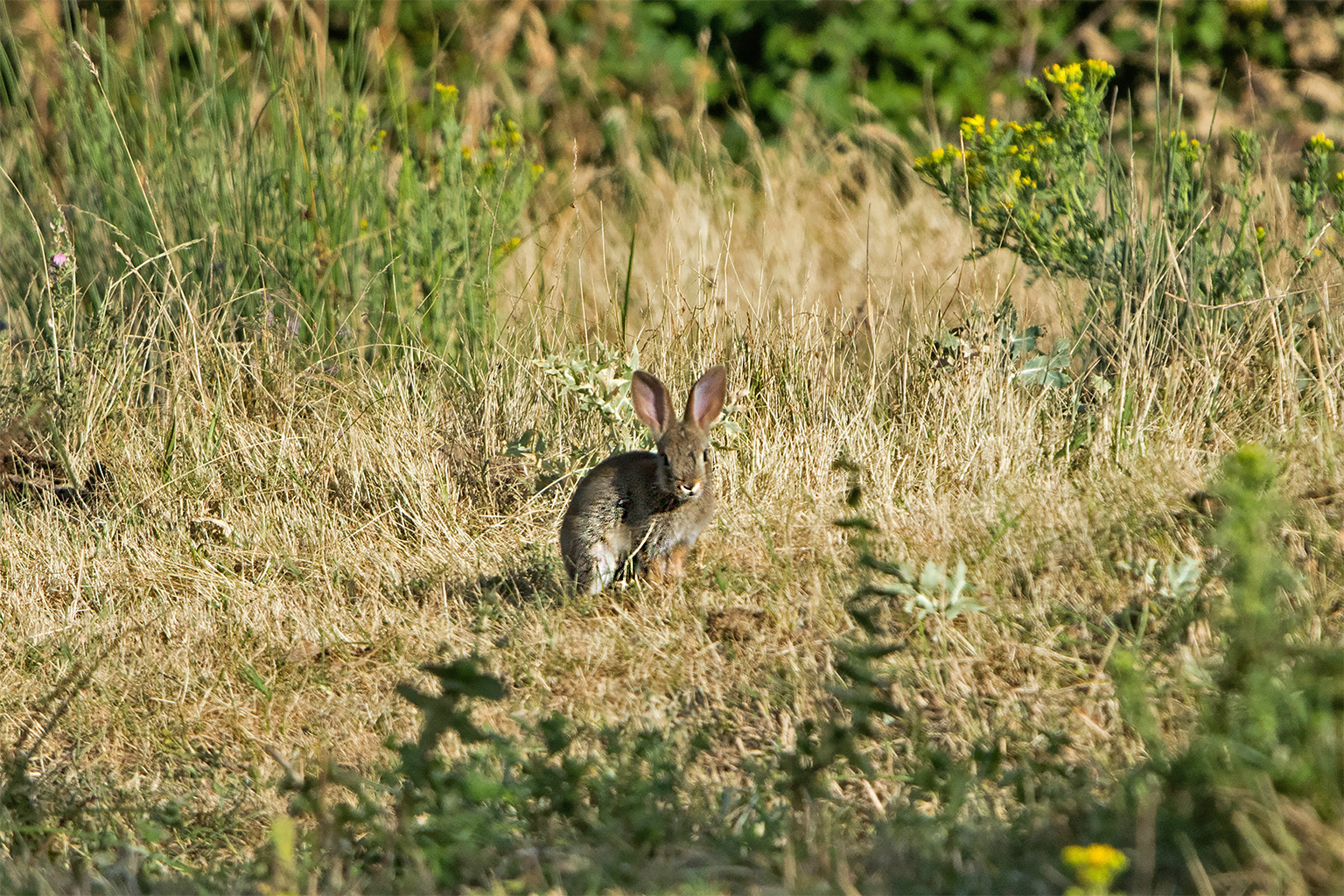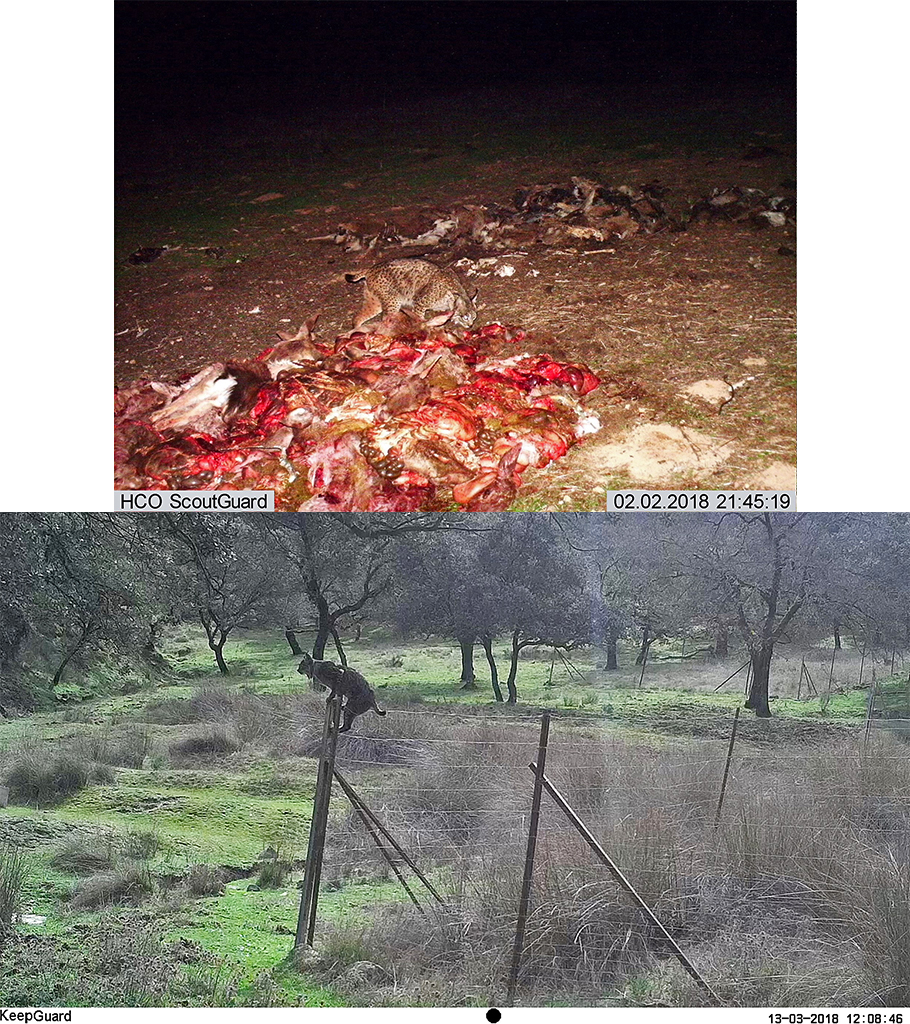- Iberian lynx recovery in Spain has been hailed as a conservation success story. Said to be among the world’s most endangered feline species, Iberian lynx numbers fell to just 200 in the wild 20 years ago, but rose in successive years due to an intensive rehabilitation program. There are more than 1,300 today.
- In 2022, scientists researching vulture behavior laid out carrion for the meat-eating birds, only to make a surprising find: A few Iberian lynx scavenged the carrion too. The scientists suggested carrion may offer an added food resource when the cat’s natural prey, the endangered European rabbit, is depleted.
- In a response to that study, another group of researchers warn that vulture feeding stations, commonly used in the Iberian Peninsula to support scavenger populations, could pose a potential conservation threat to the lynx.
- Scientists worry about the possibility of disease transmission from carrion to the endangered wild cat, though they underline further research is needed to identify the full extent of this scavenging behavior to evaluate risk. Like so many of the world’s small cats, the Iberian lynx is elusive, and challenging to study.
During a study last year in Spain to assess scavenging by vultures, researchers made a surprising and unexpected find. A small number of Iberian lynx (Lynx pardinus), among the world’s most endangered feline species, readily feasted on the carcasses. According to the study authors, this is one of the first documented instances of such behavior, which could have both positive and negative conservation implications.
Researchers found that 12 out of 17 lynx present in the study area fed on carcasses, including two adults and a youngster who feasted at the same time. They also recorded some of the wild cats scent-marking some of the remains and, in some instances, trying to hide, or “cache,” their bounty. The researchers published the findings in the journal Biological Conservation.
On the one hand, the scientists believe this could be a “potential important resource” for the recovering species in areas where their natural prey, the endangered European wild rabbit (Oryctolagus cuniculus), is seriously depleted because of disease. But the behavior also has caused concern among conservationists, as carcasses can be vectors for disease or for contamination due to lead bullets or poison found in hunted animals.
“We thought this scavenging could be a problem for the lynx,” Jorge Tobajas, lead author of the paper with the University of Córdoba and Institute for Game and Wildlife Management, told Mongabay in an interview. “Maybe there is this overlooked effect of the scavenging behavior because until now the lynx was thought of as a specialist predator in Spain, preying mostly on rabbits.”

Iberian lynx recovery
Twenty years ago, Iberian lynx numbers had dwindled to around 200 in the wild — driven to the precipice of extinction by habitat loss, persecution, and possibly by the decline of one of its primary prey species, the European rabbit, due to the introduction of viral hemorrhagic disease (VHD) in Spain. Conservationists feared the cat faced imminent extinction in the wild.
Today, after an extensive reintroduction program — consisting of the release of captive-bred individuals, rewilding, and prey recovery — there are more than 1,300 across the Iberian Peninsula, with the vast majority in Spain and smaller populations in Portugal. Lynx are now expanding their range and conservationists continue to work to connect populations.
The recovery is cause for celebration, says Alejandro Rodríguez, with the Doñana Biological Station, who has studied the Iberian lynx for several decades. In his view, such a rebound would not have been possible without sound scientific understanding of the species’ ecological needs, principally its close dependence on wild rabbits.
But Rodríguez believes it is important not to rest on these conservation laurels. “Recovering the number of lynx to similar levels we had 40 years ago is excellent, but there are still uncertainties about the species’ long-term conservation,” he wrote, adding that according to some estimates lynx numbers may still need to increase fourfold for the species to survive without intensive conservation attention.

Jumping the fence
In a separate monitoring project carried out over two years in southern Spain, researchers found that lynx and other species, such as foxes, were entering vulture feeding stations to scavenge. These fenced structures are used widely across Spain to support avian scavenger populations, such as the griffon vulture (Gyps fulvus).
In the study area, only four lynx entered the feeding stations. But according to Carlos Rouco, a wildlife ecologist and associate professor at the University of Sevilla, it’s a cause for concern as there is potentially a high risk for transmission of diseases such as tuberculosis, Aujeszky’s disease (also known as pseudorabies), and hepatitis. Rouco, along with other researchers, recently published a paper detailing their concerns in response to Tobajas’s study.
Even though there are veterinary checks on such carcasses, they are often not sufficient to identify some diseases, Rouco said: “You actually have to collect samples and carry out analysis.
“In other areas where they are using these feeders, [people] should check to make sure they are not creating potential hotspots of pathogens,” he added. “The truth is that many species can actually get inside these feeding stations.”
It’s a situation that has to be approached with caution, however, according to Tobajas. “We shouldn’t be too alarmist,” he says, as any drastic action could negatively impact vulture conservation. Nonetheless, in their recent rebuttal to the paper by Rouco’s group, his research team agrees that the carrion situation requires further monitoring to understand if this lynx behavior is indeed rare or not.

For Rodríguez, who was not involved in either research project, multiple questions remain and the scavenging would only be a possible cause for concern if such behavior was found to be widespread among the wild cat.
“In my opinion, it is yet to be confirmed that scavenging of subsidized ungulate carrion by Iberian lynx is a general pattern,” Rodríguez wrote in an email to Mongabay. “If so, I would expect ungulate remains to appear quite often in lynx feces, but this has not been observed in diet studies carried out in areas where wild ungulates are very abundant.”
Such rare behavior can be imitated or learnt by offspring without necessarily spreading to wider populations, he added. “Ungulate carcasses resulting from hunting are typically removed, and whether carrion availability could be high enough to promote [lynx] scavenging needs to be closely examined.”
The researchers agree that further investigation is needed to identify whether this scavenging behavior truly exists, is widespread, and poses a real conservation threat. Rouco and his colleagues also suggest that steps could be taken as a precaution to “predator-proof” vulture feeding stations in Spain and elsewhere around the world where scavenging behavior by threatened terrestrial species is identified.
“A good design costs money,” he said. “So, it depends how much you want to invest in a proper fence that is proofed against other non-target species.”
Banner image: The Iberian lynx is a conservation success story. In the early 2000s, its numbers had dwindled to around 200. Today, after extensive conservation efforts, the species numbers more than 1,300 individuals. Image by Animal Record via Flickr (CC BY 2.0).
Citations:
Tobajas, J., Finat, R., Ferreras, P., & Margalida, A. (2023) Iberian lynxes scavenging on ungulate carcasses: An overlooked important resource and potential risk for an endangered predator. Biological Conservation, 277, 109855. doi:10.1016/j.biocon.2022.109855
Gonzálvez, M., Jiménez-Ruiz, S., Paniagua, J., Rouco, C., & García-Bocanegra, I. (2023) Vulture feeding stations threaten Iberian lynx. Biological Conservation, 109960. doi:10.1016/j.biocon.2023.109960
Tobajas, J., Finat, R., Ferreras, P., & Margalida, A. (2023) Can vulture feeding stations have detrimental effects on Iberian Lynx conservation? Biological Conservation, 109971. doi:10.1016/j.biocon.2023.109971
FEEDBACK: Use this form to send a message to the author of this post. If you want to post a public comment, you can do that at the bottom of the page.
This story first appeared on Mongabay
South Africa Today – Environment
This article is licensed under a Creative Commons Attribution-NoDerivatives 4.0 International License.
You may republish this article, so long as you credit the authors and Mongabay, and do not change the text. Please include a link back to the original article.












